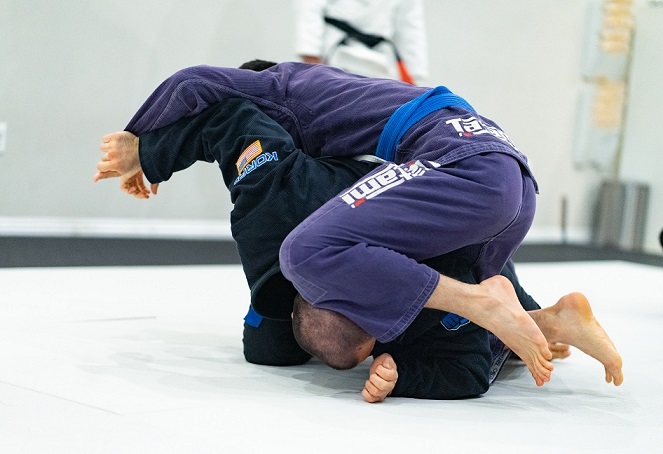Earning your Jiu-Jitsu Blue Belt
In our martial art of Brazilian Jiu-Jitsu (BJJ), a blue belt is the first color adult belt rank and it comes right after the white belt. It is seen as an achievement and a significant milestone in any Jiu-Jitsu practitioner’s journey. The criteria for earning a blue belt varies per school, instructor, and it mainly depends on the student’s own progress.
Jiu-Jitsu is a modern martial art and is continuously evolving. In many ways, it is not as rigid as other martial arts, and this is true for its belt requirements as well.
Since you have been working hard towards achieving that blue belt it is a good time for me to share what I look for when awarding a blue belt in BJJ, namely:
- Technical knowledge and skill: A blue belt should have a decent understanding of fundamental BJJ techniques and be able to execute them with reasonable proficiency.
- Consistency and mat time: A blue belt should have trained consistently and spent a certain amount of time on the mat. The exact amount of time can vary, but it typically ranges from one to three years.
- Competition experience: Many BJJ schools require their students to compete in tournaments as part of their promotion criteria. Placing in tournaments or consistently performing well can demonstrate a student’s technical proficiency and mental toughness. Although competing is helpful to increase your skill level and overall knowledge and is encouraged, it is not a hard requirement to attain a blue belt at our academy.
- Attitude and character: A blue belt should demonstrate good sportsmanship, respect for their training partners and instructors, and a willingness to keep learning and improve.
- Physical fitness and conditioning: A blue belt should possess a reasonable level of physical fitness and conditioning, which is essential for executing techniques and avoiding injuries.
One clear indication you meet the skill level of a blue belt is that you have a good understanding of the progression of a Jiu-Jitsu match, as in the options you have to control the situation from a standing and a bottom position. A blue belt in Jiu-Jitsu for instance knows techniques needed in the beginning of a match such as a take down/guard pull and can then follow these up with techniques that lead in to positional control and ultimately result into a submission hold.
Achieving a blue belt is a significant accomplishment that requires a combination of technical skill, consistent training, and a positive attitude.
Keeping working hard, and no doubt you will earn it!

